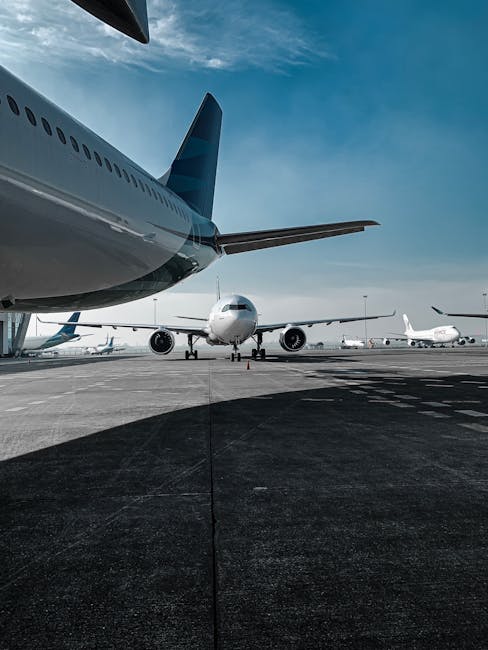When we picture the dawn of jet propulsion, the mind leaps to Whittle’s roaring testbed or the elegant lines of the German Heinkel He 178. Yet, nearly a decade before the world’s first true jets took to the air, a bizarre, barrel-shaped Italian aircraft was already challenging the boundaries of propulsion and aerodynamics. This is the story of the Stipa-Caproni—an aircraft so unconventional, it was nearly forgotten, yet it played a crucial role in the evolution of the jet engine and modern aviation.
The Unmistakable Shape of Innovation
In the early 1930s, aviation was a field ruled by propellers, fabric, and wood. Yet, the relentless pursuit of speed and efficiency drove inventors to seek new forms. Enter Luigi Stipa, an Italian aeronautical engineer whose vision was as bold as it was odd. Stipa theorized that enclosing a propeller and engine within a barrel-shaped, hollow fuselage would harness the Bernoulli principle, accelerating airflow and boosting thrust.
The result was the Stipa-Caproni—a squat, tubular aircraft built in collaboration with Caproni, Italy’s pioneering aircraft manufacturer. The plane looked more like a flying stovepipe than the sleek, streamlined aircraft of its era. The entire fuselage acted as a giant duct, housing a conventional piston engine and wooden propeller up front. The propeller drew air through the barrel, and the narrowed rear end increased the velocity of the airflow, hinting at the essential mechanism behind jet propulsion.
First Flights: Oddity Takes to the Skies
Completed in 1932, the Stipa-Caproni prototype measured just over 19 feet long, with a wingspan of 39 feet. It was powered by a 120-horsepower de Havilland Gipsy III engine—hardly revolutionary by itself. What set the aircraft apart was its “intubed propeller,” a concept Stipa patented in 1938.
Test pilot Giovanni De Briganti took the Stipa-Caproni on its maiden flight at Guidonia Montecelio airfield. To the surprise of skeptics, the aircraft flew remarkably well. It demonstrated exceptional stability, gentle stall characteristics, and a surprisingly quiet ride due to the muffling effect of the ducted design. Yet, its top speed was a modest 81 mph—slower than conventional aircraft of the era. The tradeoff for innovation was clear: the design’s drag offset many of the efficiency gains theorized by Stipa.
Why the Stipa-Caproni Mattered
At first glance, the Stipa-Caproni might appear to be a failed oddity, a dead end in the march of progress. But this experimental craft was one of the first real-world attempts at a “ducted fan” propulsion system. Its core concept—using a streamlined duct to accelerate and control airflow—would later become central to both modern jet engines and turbofan designs.
Stipa’s theory wasn’t just speculative; it was rooted in solid aerodynamic science. The “intubed propeller” increased the thrust efficiency of the propeller by reducing vortices and wake turbulence. While the drag from the oversized barrel countered these benefits in practice, the principle behind the design was sound. In fact, it foreshadowed the bypass fans that would become standard in high-efficiency jet engines decades later.
Influence on Aviation Technology
The Stipa-Caproni’s influence can be traced through several key technological evolutions:
- Ducted Fan Propulsion: Today, ducted fans are common in drones, VTOL aircraft, and even some experimental electric planes. The Stipa-Caproni was one of the earliest full-scale demonstrations of this concept.
- Jet Engine Bypass: Modern turbofan engines, which power most commercial airliners, work by bypassing a large volume of air around a jet core—essentially a very refined ducted fan. Stipa’s work anticipated this solution for improving thrust and efficiency.
- Noise Reduction: The Stipa-Caproni’s design resulted in a surprisingly quiet flight. Today, noise reduction is a major focus in engine design, and the principle of using ducts and nacelles to muffle engine noise has become standard practice.
- Experimental Courage: The Stipa-Caproni exemplifies the spirit of experimental aviation—a willingness to challenge conventions and explore “what ifs.” Its legacy endures in the testbeds and prototypes that continue to shape the future of flight.
The Human Dimension: Passengers and Pilots
For the pilot, flying the Stipa-Caproni was a study in contrasts. On one hand, the aircraft was incredibly stable, resisting spins and stalls. On the other, its odd shape and sluggish speed limited its utility. Had the design matured, it might have offered a quieter, more comfortable ride for passengers—an early glimpse at the comfort-focused priorities of modern air travel.
While the Stipa-Caproni never entered production, its lessons were not lost. The principles of aerodynamic efficiency, noise reduction, and innovative propulsion found their way into the DNA of the aviation industry—ultimately benefiting every passenger who enjoys faster, quieter, and more efficient flights today.
Legacy and Lessons Learned
Why did the Stipa-Caproni fade into obscurity? A combination of factors: the technical limitations of the era, the rapid pace of competing innovations, and the “too radical” appearance that failed to inspire confidence in conservative government and industry leaders. Yet, as with many experimental designs, its true impact was felt not in immediate adoption, but in the seeds it planted for future breakthroughs.
Historians and engineers now recognize the Stipa-Caproni as a missing link between the era of wood-and-fabric biplanes and the jet age. Its experiments in flow dynamics and propulsion prefigured the leap to jets, showing that radical ideas—no matter how odd—can pave the way for revolutionary progress.
Today, a replica of the aircraft hangs in the Italian Air Force Museum at Vigna di Valle, a silent testament to the power of imagination in aviation. Engineers studying advanced propulsion systems continue to cite Stipa’s work, and his patents remain a reference point in discussions about ducted fans and noise suppression.
Conclusion: Celebrating Aviation’s Unlikely Pioneers
The Stipa-Caproni may never have broken speed records or entered mass production, but its legacy is woven into the very fabric of modern flight. It stands as a reminder that progress is not always linear; sometimes, the most unusual experiments hold the keys to the future. As we board our whisper-quiet, high-bypass turbofan-powered jets today, we owe a nod to Luigi Stipa and his barrel-bodied dream machine—a crucial, if forgotten, chapter in the evolution of the jet engine.
In aviation, as in life, it often pays to look back at the oddities and outliers. They may appear strange or even laughable at first, but history shows that their ideas can one day become the engine of progress—propelling us, quite literally, into the future.



